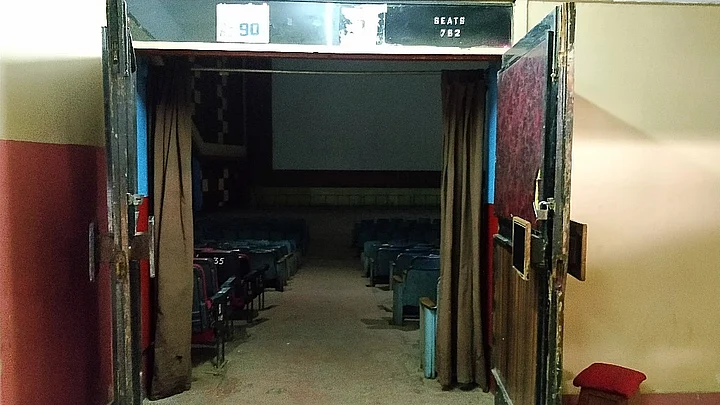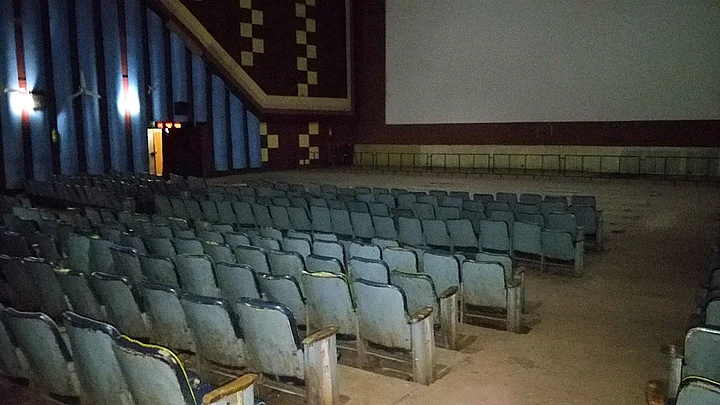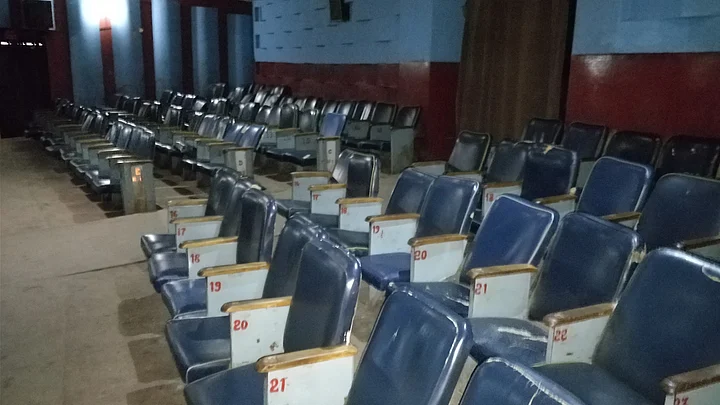Catching the latest blockbuster at the nearest multiplex may have increasingly become more of a laidback solo experience for many today. But cine goers would agree that the same film viewed at a single screen theatre is more of an exuberant social event.
At these theatres, where moderation is alien concept, a whistle or loud cheer is mandatory when the hero comes on screen. Every punchline gets a cheer too. From the huge cut-outs and decorated theatres entrances, to pink paper tickets and the ‘luxury’ of balconies – single screens continue to feed the frenzy of the fans.
Despite this fervour, single screen theatres in Bengaluru are dying an inconspicuous death. The changing urban landscapes and mushrooming of the multiplexes is eating into the investments of single screen theatre owners, causing several of them to shut down.
Today, the city that once boasted of over 200 single screen theatres is left with less than half of the original numbers. The single screens are either being swallowed by the booming real estate market of Bengaluru, or converting to multiplexes. While some single screens are not ready to give in, many fear it is only a matter of time.
The Latest Causality – Kapali Theatre
On 11 October, Kapali Theatre closed their single screen operations, leaving behind a 49-year-old legacy of having entertained Bengaluru. In 1968, when the theatre was inaugurated by then finance minister Moraji Desai, it was the largest single screen theatre in Asia with 1,400 seats. Because of its large capacity, a movie running full house in Kapali Theatre was considered a matter of pride among filmmakers.
However, the theatre was not able to make ends meet with the screening alone and agreed to bring down the building to construct a multiplex in a joint venture.
Disappearing Broadway of Kannada Movies
“Majestic, Tribhuvan, Geetha, Kempegowda, Himalaya, Kalpana, Alankar, Prabhat and Geeta Sagar, and now Kapali,” recounts Krishne Gowda, who runs a textile store in Gandhi Nagar, listing out the theatres that have vanished from the locality. At least these were names he could recollect.
The Kempe Gowda Road-Gandhi Nagar stretch in the heart of Bengaluru was Broadway for Kannada movies. The area had over 20 single screen theatres, making it a paradise for movie lovers; Today only five of these theatres remain.
Gowda was among the many who stood in lines outside the theatres to get a glimpse of the popular stars who would visit the theatres on the first day of the release of the film.
“The glamour is no longer there, stars now choose to visit the multiplexes. Over that, the property values have shot up over the years, so it is not surprising that theatre owners are selling the properties. It is only matter of time, all of them vanish from here,” says Gowda.
The Decentralisation Effect
Not just on KG Road but across the city, single screens have been closing down in the last decade. The changing landscapes have played villain for several single screens, especially those on KG Road.
A decade earlier, the Majestic area near KG Road was the city’s shopping and transport hub. With outstation visitor and residents crowding the areas on weekend, the theatres ran to full houses.
But as the city expanded, each locality got its commercial hubs; the malls soon followed. The interstate transportation facilities were decentralised to different parts of the city to decongest Majestic. Since facilities were available close to them, people had no reasons to come to the city centre and numbers theatres started seeing empty seats.
No Second Shows
While most multiplexes see more attendance during their night shows, theatres in KG Road-Gandhi Nagar don’t run a second show. The last show at these theatres are at 7.30pm. The changing face of the area is one of the reasons behind this change, they say.
“Unlike in the residential areas, there is not enough transportation facilities here, bus and metro rail services stop at 10pm. By night, this area will be deserted and people don’t want to be stuck here,” said Arun Kumar, proprietor of the Santosh Theatre, one of the oldest single screen theatres in the city.
Moving Ahead with the Times
While several single screen theatres are forced to close, there are some who have put up a fight, by renovating. The Urvashi Theatre on Lal Bagh main road transformed completely, with the installation of a 4K digital projector and better sound system. This single screen has been giving tough competition to multiplexes and has been sought after by several movie lovers for their quality.
Some theatres have opted for a mini multiplex makeover. The space taken up by the larger single screen has been converted to smaller halls. With the available additional halls, more movies can be shown in these theatres, increasing profits.
Despite the problems, several single screen owners say their days are not numbered yet. They say they get their faith from the crowd that throngs the theatre on the first day of a movie release. “People may have more options at the multiplexes, but experiencing a movie in our theatres is something no multiplex can match. This is not a nostalgic statement, but I know of people who come here for that experience, and it is here to stay,” said Arun Kumar, proprietor of Santosh Theatre said.
(Breathe In, Breathe Out: Are you finding it tough to breathe polluted air? Join hands with FIT in partnership with #MyRightToBreathe to find a solution to pollution. Send in your suggestions to fit@thequint.com or WhatsApp @ +919999008335)
(At The Quint, we question everything. Play an active role in shaping our journalism by becoming a member today.)




